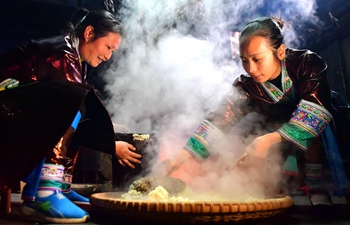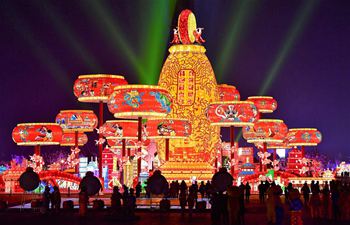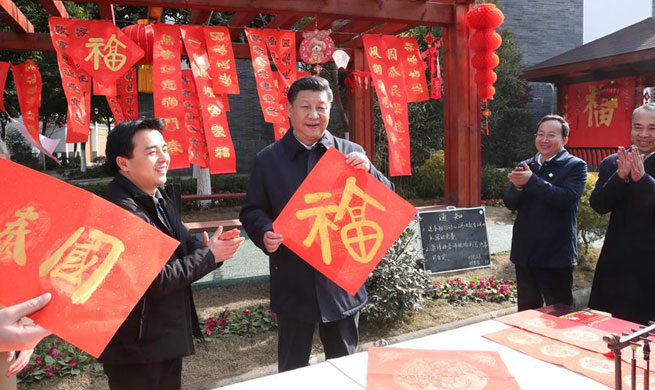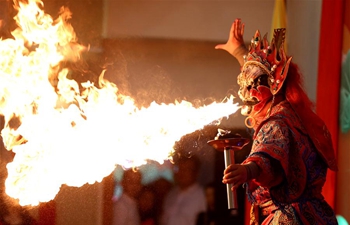BEIJING, Feb. 12 (Xinhua) -- When eating fried chicken, diners now have the opportunity to have a taste of traditional Chinese culture.
An large interactive screen showing how the Lantern Festival was celebrated in Emperor Xianzong's palace in the Ming dynasty (1368-1644) covers the wall beside the cashiers at a KFC restaurant in Qianmen, central Beijing. The restaurant was the first KFC opened in China in 1987.
When a customer scans a QR code beside the screen with their mobile phone, music starts to play and the characters on the screen begin to move. The customer can also access more information on their phone.
The National Museum of China has authorized KFC to use the intellectual property rights (IPR) of its 17 collections, aiming to jointly create "national treasure-themed restaurants."
By obtaining authorization to use the images and develop characters based on them, KFC hopes to enhance customers' cultural experiences in their restaurants through technology.
In the Qianmen restaurant, images of dragon and phoenix crown relics are shown in the form of window displays and wall paintings, with a detailed introduction of the relics attached.
Images of the relics are also painted on the dining tables in the restaurant.
A KFC restaurant in Changsha, the capital of central China's Hunan Province, is themed on a square vessel with four rams from the Shang Dynasty (1600 B.C.-1046 B.C.). A short animated video about the relic tells diners how it was unearthed.
KFC has created the national treasure-themed restaurants in 18 cities where the relics were unearthed. The store layouts include showcases, ceiling lamps, dining tables and chairs designed to reflect a specific relic or collection.
Li Liusan, vice director of the National Museum of China, said the authorization to use the IPRs will help integrate traditional culture with everyday life.
"We know that 85 percent of KFC's customers in China are children and young people," Li told. "We hope they can learn more about Chinese culture while consuming."
Starbucks also promotes Chinese culture with membership cards and mugs featuring traditional patterns implying good luck.
Zhang Huiyu, a research fellow at School of Journalism and Communication at Peking University, said that foreign brands may choose to use traditional Chinese cultural elements for business purposes.
"The relics, together with the Chinese traditional culture, become more present in people's daily lives," he said.

















